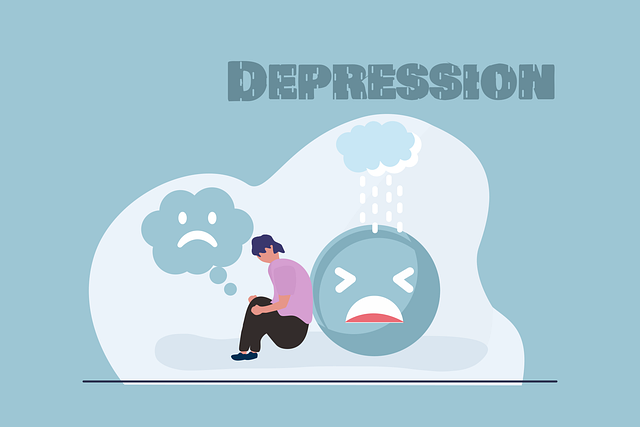Superior Gender Identity Therapy prioritises client safety through comprehensive risk assessment and harm minimisation. Therapists tailor support based on individual needs, implementing strategies like depression prevention, open communication, and stress management. This approach, backed by evidence-based techniques, enhances therapy effectiveness and promotes positive outcomes for clients navigating gender identity challenges. By fostering a safe environment, addressing past traumas, and engaging in public awareness, this therapy improves mental health awareness and builds resilience, demonstrating its impact through successful case studies.
Risk assessment and harm minimization planning are essential components of superior gender identity therapy, ensuring client safety and positive outcomes. This comprehensive article explores critical aspects of these processes, offering insights into effective strategies for practitioners. We delve into understanding risk assessment in the unique context of gender identity therapy, highlighting key considerations. Additionally, we present harm minimization strategies and provide a step-by-step guide to implementing robust planning for safe and successful therapeutic interventions, supported by real-world case studies.
- Understanding Risk Assessment in Gender Identity Therapy
- The Role of Harm Minimization Strategies
- Implementing Effective Planning for Safe Therapies
- Case Studies: Successes and Lessons Learned
Understanding Risk Assessment in Gender Identity Therapy

Risk assessment is a cornerstone of superior gender identity therapy, ensuring a safe and supportive environment for individuals navigating their gender journey. It involves identifying potential risks and harms associated with the therapeutic process itself, as well as exploring how these might be mitigated. This comprehensive approach recognizes that while therapy aims to foster growth and well-being, it’s not without its complexities and challenges.
In this context, understanding a client’s unique risk factors is vital for tailoring effective communication strategies and stress management techniques. By incorporating depression prevention measures and fostering open dialogue, therapists can create a secure space where individuals feel empowered to explore their gender identity. This proactive harm minimization planning enhances the overall effectiveness of therapy, ensuring positive outcomes for those seeking support in their gender transition journey.
The Role of Harm Minimization Strategies

Harm minimization strategies play a pivotal role in risk assessment and overall therapy effectiveness, especially within the context of Superior Gender Identity Therapy. These approaches are designed to reduce potential harm and promote positive outcomes for individuals seeking support. By implementing evidence-based techniques, therapists can create a safe space for clients to explore complex issues while mitigating risks associated with therapy itself. This is particularly crucial when addressing sensitive topics like gender identity, where individuals may experience heightened anxiety, depression, or other mental health challenges.
Incorporating burnout prevention strategies for healthcare providers is essential alongside harm minimization. Therapists must prioritize their own mental wellness through techniques such as Stress Management and Mental Wellness Journaling Exercise Guidance. This not only ensures the therapist’s longevity in the field but also enables them to offer more consistent and compassionate care, ultimately enhancing the therapeutic experience for clients engaging in Superior Gender Identity Therapy.
Implementing Effective Planning for Safe Therapies

Implementing effective planning for safe therapies is paramount in ensuring positive outcomes for individuals seeking mental health support, particularly in specialized areas like Superior Gender Identity Therapy. This involves a comprehensive risk assessment that identifies potential hazards and vulnerabilities unique to each client’s journey. By meticulously evaluating factors such as past traumatic experiences, co-occurring disorders, and societal influences, therapists can anticipate and mitigate risks proactively.
A robust harm minimization plan, integral to this process, focuses on enhancing self-esteem improvement and fostering mental health awareness. It involves tailoring therapeutic interventions to address specific needs while promoting resilience and coping strategies. Moreover, engaging in public awareness campaigns development can further contribute to a supportive ecosystem, reducing stigma and encouraging open dialogue about gender identity issues, thereby ensuring the overall safety and well-being of clients within these specialized therapy settings.
Case Studies: Successes and Lessons Learned

Case studies offer a powerful tool for understanding both the successes and challenges within risk assessment and harm minimization planning. One notable example is the implementation of Superior Gender Identity Therapy, which has shown remarkable results in enhancing mental health awareness and boosting confidence among individuals with gender dysphoria. By adopting personalized approaches, therapists create safe spaces where clients can explore their identities without fear of judgment or conflict. This innovative therapy has led to improved quality of life for many, demonstrating the effectiveness of tailored interventions.
Lessons learned from these case studies are invaluable. They highlight the importance of cultural sensitivity and individualization in therapeutic practices. For instance, successfully addressing potential risks involves teaching conflict resolution techniques that empower clients to manage challenging situations. Moreover, these studies underscore the need for ongoing evaluation and adaptation, ensuring that harm minimization strategies remain relevant and beneficial as societal norms evolve.
Superior gender identity therapy necessitates a robust approach to risk assessment and harm minimization planning. By understanding the complexities of individual client experiences and implementing evidence-based strategies, therapists can create safe and supportive environments. The case studies presented highlight successful outcomes and valuable lessons, demonstrating the importance of tailored planning in enhancing therapeutic outcomes for clients navigating gender identity issues. Through continuous evaluation and adaptation, mental health professionals can ensure their practices remain at the forefront of providing exceptional care.














